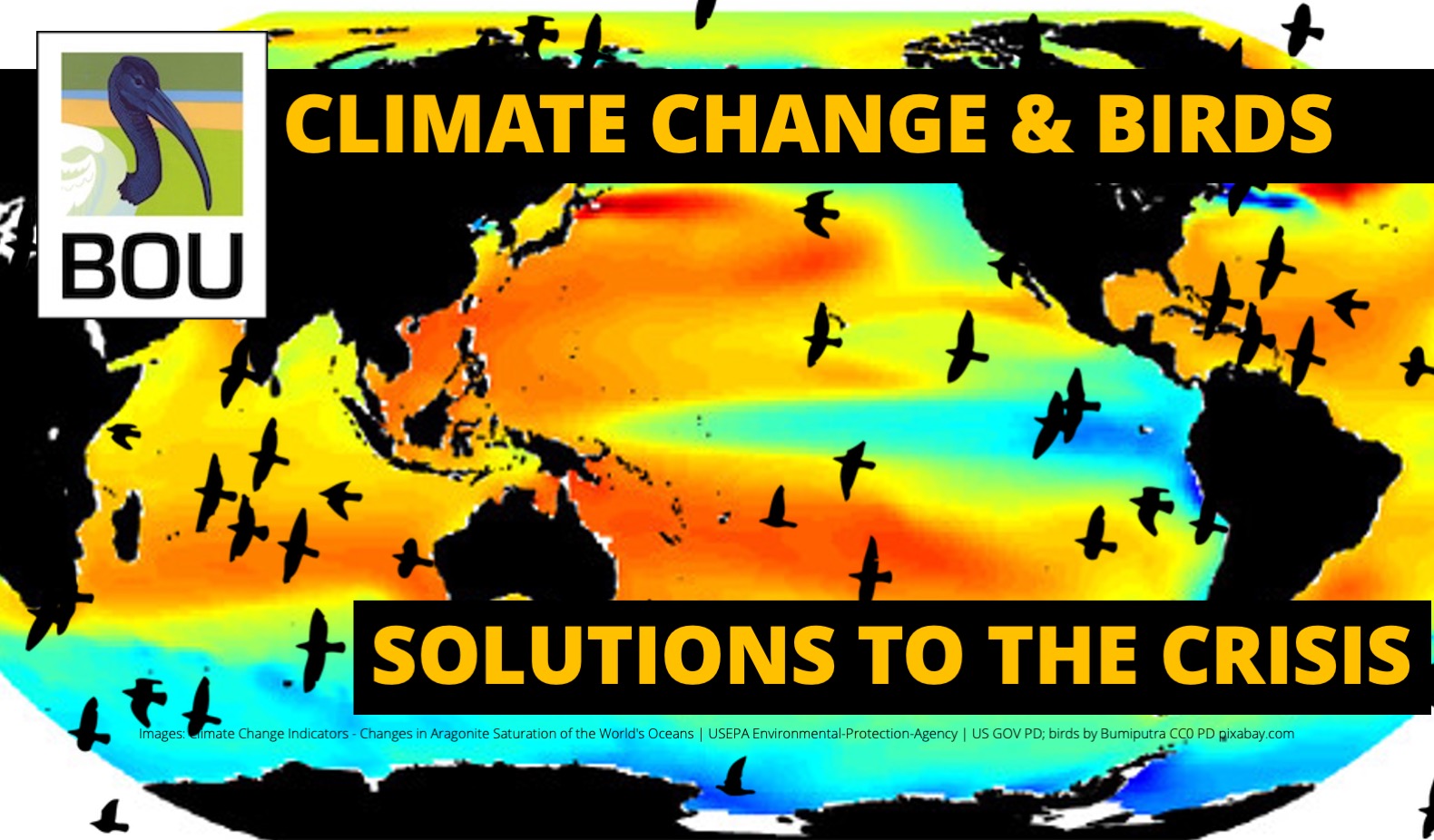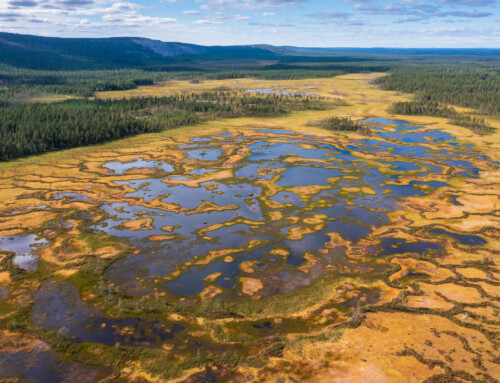
For us, the run-up to the conference was a bit more low-key than the last one we attended in person. No last-minute dash to book train tickets, no excitement about meeting old colleagues or anxiety over stuttering over a presentation in front of a room full of esteemed scientists (all presentations were recorded beforehand). Instead, it started like pretty much every other day since March – by turning on the computer and logging into a Zoom meeting (other online meeting platforms are available).
However, the sense of ennui did not last long as it became apparent that this would be another excellent BOU conference, despite the lack of social interaction.
The conference began with a welcoming address from BOU President, Juliet Vickery (BTO), who explained that the original plan for this conference was to coincide with the UN’s Climate Change Conference of the Parties (COP26) in Glasgow (postponed until November 2021 due to the pandemic) and that it was definitely the lowest carbon conference the BOU could have imagined holding! Christine Howard (Durham University and a member of the conference Scientific Programme Committee) then set the scene for the day, and not holding back from the fact that climate change is happening, she emphasised the importance of interconnected approaches to managing the future, in terms of mitigation and adaptation strategies. Following this great introduction came the first set of the pre-recorded presentations which focused on vulnerability in the tropics where five speakers introduced us to the range of predicaments facing vultures in India, heat stress responses of desert system birds and negative climate impacts on the breeding successes of desert hornbills and Lesser Kestrels. One special mention must go to Alan Lee whose talk about using approaches to rebuild landscapes in the South African Karoo was delivered completely in rhyme! Avian species and their habitats in tropical and subtropical zones are nearing the top of their critical temperature thresholds and they will have to adapt or move to survive.




The evening’s talks continued with further impacts of climate change on a range of migratory species such as the intraspecific variation in shifting phenologies of the Gray Catbird and how increased abundances of Snow Geese are affecting marshes. Evidence that mismatches in arthropod emergence and hatch dates is reducing the growth of Red Knot chicks was followed by a study showing that individual behavioural preferences for selection of refugia may have both benefits and hindrances under changing climates.

At the end of a fantastic (and exhausting if you’d lasted the 14 hours) day, the conference’s Scientific Programme Committee lead, James Pearce-Higgins (BTO), closed the conference with a summary showing how the four priorities from BOU’s previous Birds and Climate Change conference in 2010 were now being studied and assessed: 1) Improve vulnerability assessment, 2) How to facilitate resistance, 3) how to accommodate range shift and 4) understand potential for translocation.
Running alongside the Zoom conference was a dedicated Slack channel which provided a great opportunity to rekindle some of the networking and chats that happen around an in-person event. Questions that didn’t have time to be read out during each presenter’s Q&A session were added to Slack with speakers replying there prompting some interesting conversations. Being able to discuss points with multiple people without losing the thread amongst other conversations in the normal ‘Zoom chat’ really made a difference and also provided a great way of collating the commentary for the science organisers.
All 37 Zoom talks were presented, in parallel, in real time on Twitter and interspersed between these Zoom sessions were the 17 Twitter-only presentations. If you weren’t able to register to attend or receive the Zoom recording, then the 54 presentations on Twitter provide an excellent overview of this dual conference. Check out the #BOUsci20 tag on Twitter – it’s all free to view.
This conference really brought home the range of challenges that climate change poses to birds. From thermoregulation, to changing prey phenology, to forest fires. Unfortunately, the drastic impacts of climate change on our planet seem inevitable, as governments have failed (and continue to fail) to take the necessary measures to reduce our carbon emissions. The level of warming will depend on how quickly we become carbon neutral, but in short, we can expect a significantly warmer world.
This warming, and other associated changes to earth’s weather systems, will cause the composition of bird communities to change as species either adapt, shift their ranges or are driven to extinction. Unfortunately, climate change is only one of a myriad of pressures humans are imposing upon birds. To allow what Benjamin Zuckerberg called in his talk, a transition strategy of conservation (facilitating range shifts and novel compositions of bird communities under climate change), we have to provide birds good quality habitat to survive in. This can only occur through protecting our existing “wild” places and increasing the area of land suitable for birdlife to thrive. Thankfully, this conference showcased the number of great scientists communicating this message and working towards providing solutions.
In a first for our ornithology sector, Climate change and birds: solutions to the crisis (BOUSci20) was a BOU conference held simultaneously across two digital platforms – Zoom and Twitter.
The BOU is extremely grateful to the following individuals for planning and delivering these parallel events: the conference Scientific Programme Committee (SPC) – James Pearce-Higgins (BTO and SPC Chair), Christine Howard (University of Durham), Jo Gilbert (RSPB) and Francis Daunt (UK CEH and Chair, BOU Meetings Committee); the Zoom delivery team – Ryan Burrell (University of Bournemouth) and Steve Dudley (BOU Chief Operations Officer); the Twitter delivery team – Nina O’Hanlon (University of the Highlands and Islands and BOU Social Media Support Ofifcer) and Monika Reiss (John Moores University, Liverpool).
Having both low-cost and free options available increased the accessibility of this dual event and saw 375 people (from 41 countries) register for the Zoom event (or to receive access to the recording) and 1,818 people follow the Twitter event.
375 people registering for Zoom is three times our average in-person attendance for a BOU autumn meeting. Of these, 311 people attended at least part of the live Zoom event. We estimate that 85% of those attending our in-person meetings are from the UK. The switch to online and extending the event so scientists in other time zones could join at least some of the Zoom conference live (at a reasonable time for them to do so), saw a major shift in the geographic spread of registrants with only 42% from the UK, 29% from Europe, 18% from North America, 5% from Oceania and 2% each from South America, Asia and Africa.
Of the 1,818 who followed the Twitter event, 503 actively participated by either tweeting or retweeting content on the #BOUsci20 tag, gaining a wider ‘potential impression’ audience (i.e. the maximum number of people following the 503 active participants on the conference tag) of 650,000 people.
It is estimated that running the planned in-person event would have used around 5.5 tonnes of carbon. Switching the conference to a wholly online event across two platforms saved around 5 tonnes of carbon consumption.
The BOU will continue to look at hosting similar dual events for its future conferences in order to improve accessibility and the wider reach of our events and to reduce our overall carbon footprint in delivering scientific conferences to as wide an audience as we can.
Image Credits
Top right: Pacific Ocean sea surface heights | NASA-JPL/Caltech/Ocean Surface Topography Team climate.nasa.gov
If you want to write about your research in #theBOUblog, then please see here.





